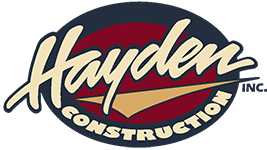When it comes to water damage cleanup, safety should always be a prominent feature. Standing water can harbor a variety of bacteria and chemicals. If your house has sustained a leak or a flood, think carefully about safety before diving into DIY cleanup. Identify likely dangers, take precautions, and make sure you have the right safety equipment before you begin working.

COMMON HEALTH RISKS ASSOCIATED WITH WATER DAMAGE CLEANUP
There are two major risks concerned with water damage. Water that starts out contaminated poses a huge problem. For example, you should never clean sewage yourself. This water carries a risk of contracting serious illnesses. Sewage water is not the only water that is considered risky. Water that may be contaminated with chemicals also poses a risk during water damage cleanup. If the leak occurs in your garage, under your bathroom sink, or another area that is likely to collect harsh cleansers or other household chemicals, exercise extra caution during cleanup.
In addition to inherently contaminated water, water can become contaminated over time. Stagnant water is the most hospitable to mold and bacteria. If a pool of water has been sitting for more than a few hours, assume that mold has already started to grow. The speed that clean water becomes dangerous is very quick. It’s always better to be safe than sorry when dealing with water leaks.
SAFETY PRECAUTIONS BEFORE CLEANUP BEGINS
The first step in water damage cleanup is evaluating whether or not you’re equipped to handle it. If the water is obviously contaminated, it’s best to call a water damage restoration company. Sewage, chemically contaminated, or stagnant water that’s cloudy should all be handled by professionals. If you know that the leak is clean and recent, you can move into the next steps of water damage cleanup.
Make sure that all outlets are disconnected. Turn off the power to the room, if not the entire house. If you’re going to use electrical equipment to help dry up the water, use extension cords and plug them in far away from the water. However, don’t do this until all standing water has been removed. Once you’re dealing with soggy carpet and not standing water, you can begin to use equipment to remove the remaining water.
SAFETY EQUIPMENT DURING CLEANUP
The last step before diving in with your mop and bucket is making sure you have the right safety equipment. Don’t go in unprepared. Make sure the water is fresh and clean before entering an area. Protecting your skin is the first requirement. Make sure to wear boots with long trousers tucked into them. It’s possible to step on something unseen beneath the water. Bandage cuts and open wounds, this eliminates exposure to contaminated water.
Simple masks provide additional protection during water damage cleanup. While not a fool-proof system, masks help protect your lungs from any chemical traces present in the water. Contaminated water doesn’t always look dangerous, so take precautions even if you think the water is safe.
Water damage cleanup can be dangerous. If you’re facing a leak or a flood, take the time to stay safe. Ask yourself if the water is safe for you to clean yourself. Turn off the electricity before you enter an area with water damage. Remember not to use powered equipment in standing water. Focus on your own safety equipment. If any of these areas are beyond your means, don’t risk it: contact a professional water damage restoration team.





